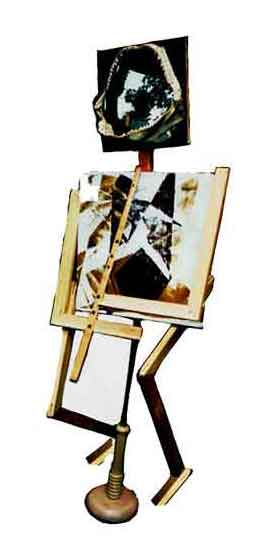| back to MJs | Back to Doran | Back to Andrea |
|
A. Ursyn
Orchestra / Oboist Colin |
| back to MJs | Back to Doran | Back to Andrea |
The sound of an oboe can easily be identified because it plays a long steady note while the orchestra tunes. The oboe, mostly made of wood, has many keys with a double reed on the top. When air is blown through the double reed, these reeds start beating, moving the air through. The oboe can also be disassembled into three sections and be carried in a small case.
The oboe has been tagging along from practically the beginning of time. Archaeologists found a pair of them that dated back to 2800. By the mid 17th century, oboes were used in opera scores. Through the 18th century, keys were added; and, in the 19th century, Frederic Triebert practically redesigned the oboe by adding even more keys.
Most of the time, an oboist will be seen sucking their hard or soft reeds. The sucking will moisten it so it will be easier for the reeds to beat. Hard or soft reeds are both used, and it is the preference of the musician for which one to use.
Some important oboe pieces are:
Prokofiev: Peter and the Wolf
Handel: Messiah
Prokofiev:The Seasons
 |
Oboist Colin approached an acoustician Danny to ask him for advice and they went to a chiefs Frank, Bob, and Marcel’s place (Frank, Bob, and Marcel are marvelous cooks). After dinner was served, Colin began to talk about his seventeen-year-old daughter Andrea who will soon graduate from the high school. Andrea plays oboe in Doran’s symphony orchestra, but she really enjoys math and wants to work as an architect and devote her skills exclusively to designing concert halls. Colin asked Danny whether it would be possible to open a special course of study where students would focus on this particular field. Danny replied that it’s a perfect time to discuss this idea because of the approaching international conference on acoustics. Danny whether it would be possible to open a special course of study where students would focus on this particular field. Danny replied that it’s a perfect time to discuss this idea because of the approaching international conference on acoustics. Danny will organize panels where architects and acousticians will discuss the sound quality at the concert stages, in conference halls, and in movie theaters. He also suggested a Conference on Generative Art and to click on the ARCHITECTURES button at the generative design projects of architecture website. "Do you make art, because you are the artist, or you are the artist, because you make art?" asked Danny. "Oh, it's almost like with having to go to the bathroom," Colin replied. |
|---|